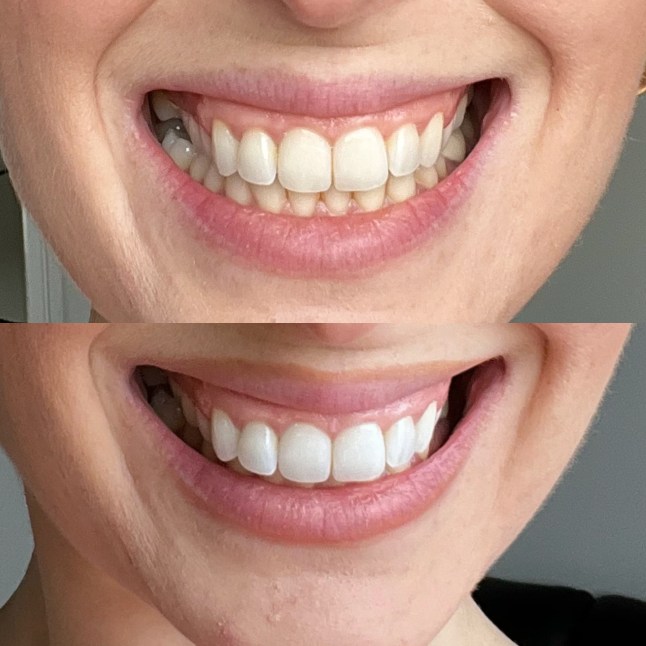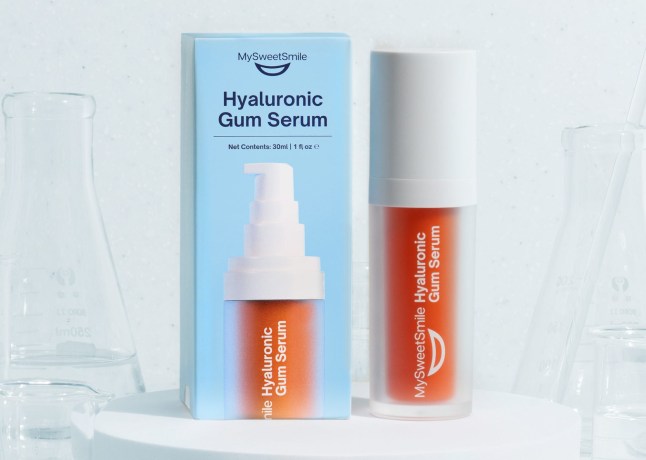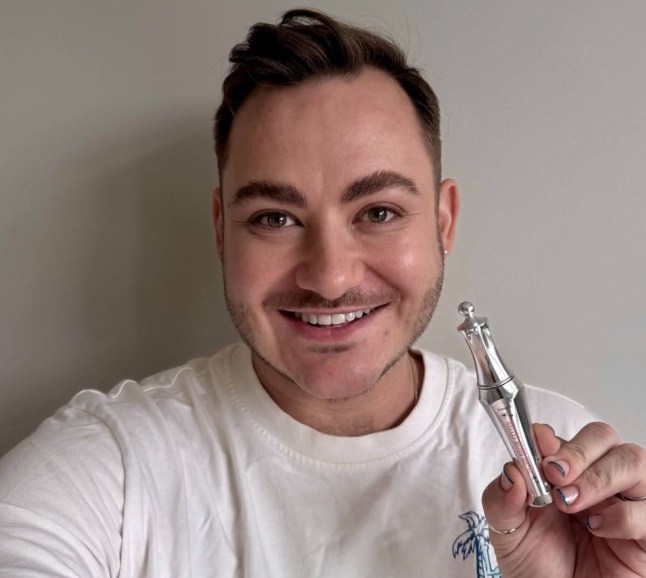18 Nov, 2025 | Admin | No Comments
Amazon is giving away 4 months of music for FREE – but you’ll need to be quick


Metro journalists select and curate the products that feature on our site. If you make a purchase via links on this page we will earn commission – learn more
If you’re the sort who always has a tune playing (and loves to save a few quid), this one’s for you.
Amazon is giving away four months of its Amazon Music Unlimited membership completely free. Yes, really. Four months of unlimited, ad-free music for absolutely nothing.
The offer is valid from now until 4pm on 9 January 2026, but why wait until then? Party season is just around the corner, and it’s the perfect excuse to get your Christmas playlists sorted early.
Whether you’re hosting Christmas drinks, wrapping presents, or just trying to drown out the sound of your family arguing over Monopoly, this unmissable offer could be the making of your soundtrack to the season.
We’re thinking… Bublé and Mariah on repeat? Or perhaps a spot of Nat King Cole? I can hear the bells jingling…

Amazon Music Unlimited
Sign up for Amazon Music Unlimited and get four months free for Prime members (three for non-Prime), with access to 100 million ad-free songs, millions more in Ultra HD, Dolby Atmos and 360 Reality Audio tracks, top podcasts, and one free Audible audiobook per month. Stream on your phone, tablet, PC, Fire TV or Alexa, and download playlists for offline listening.
Sign up and you’ll get access to a whopping 100 million songs in HD, millions more in Ultra HD, plus loads of Dolby Atmos and 360 Reality Audio-mastered tracks, so everything sounds crystal clear.
And as with most music streaming services, you can download playlists and albums for offline listening – perfect for long car journeys, holidays and daily commutes.
It’s not just about music either. Amazon Music Unlimited now comes with top podcasts ad-free, a free Audible audiobook every month and access to Audible’s huge free library.
Audible’s library now exceeds 800,000 titles , offering everything from blockbuster fiction to fascinating non-fiction, self-development titles, children’s stories and more.
So if you fancy swapping your party playlist for a bit of true crime, celebrity gossip or a relaxing bedtime story, now you can.
This incredible four-month promotional offer for Prime members (or three months for non-Prime members) starts on November 13 2025, and ends on January 9 2026.
It’s available only to new subscribers, and the subscription auto-renews after the trial period to the standard £10.99 for Prime members and £11.99 for non-Prime members.
Honestly, for a freebie, it’s hard to beat. Four months of unlimited tunes, podcasts and audiobooks and just in time for Christmas? Sounds like a bit of a no-brainer.
Follow Metro across our social channels, on Facebook, Twitter and Instagram
Share your views in the comments below
Shop the best Christmas jumpers for teenagers and tweens – from hoodies to oodies, funny novelty knits and cool designs for a teen girl or a teen boy. Whether they’re a football fan, gamer lover or you’re after a funny novelty gift idea.
18 Nov, 2025 | Admin | No Comments
‘I’m pregnant with my gay husband’s baby, he only makes love to me’
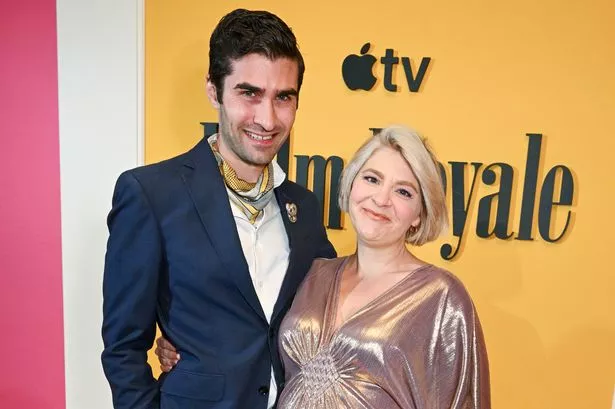
Samantha Wynn Greenstone and Jacob Martin Hoff insist they are in a fully monogamous relationship despite their differing sexual preferences as they announce their pregnancy
18 Nov, 2025 | Admin | No Comments
This chic Parisian perfume set is on rare sale — and it smells like pure autumn vibes

Metro journalists select and curate the products that feature on our site. If you make a purchase via links on this page we will earn commission – learn more
Black Friday is fast approaching, and while we’ve already seen an influx of beauty deals, we’ve found one unmissable offer to shop ahead of Cyber Week.
The Perfume Shop has slashed the price of select items online, including Zadig & Voltaire This Is Her! Eau de Parfum Gift Set, which usually retails for £81.
Treating you to an unmissable, limited-time deal, you can now snap up the two-piece set for just £52.99, which makes a saving of almost £30.
The gift set includes This is Her! Eau de Parfum 50ml and This is Her! Scented Body Lotion 50ml – a gorgeous duo for layering and intensifying your scent.
And truly, we think this is the scent of the season.
The designer brand’s iconic scent first launched in 2016 and has been hugely popular ever since, which is unsurprising considering The Perfume Shop describes this scent as “addictive floral woody gourmand fragrance that embodies the Parisian woman.”
Who doesn’t aspire to carry that sophisticated air of a Parisienne femme fatale? Sign us up.
The fragrance boasts top notes of floral jasmine, which is undercut by sweet notes of vanilla and warm chestnut, while sandalwood is the base accord that leaves a long-lasting aroma.
The blend is not too floral, not too sweet and not too heady either, just the perfect hybrid of almost all fragrance profiles.
The multi-layered scent is perfect for anyone, but we think it would be suit the autumn/winter months when you’re seeking warm yet not too sickly sweet scents. AKA right this second.
It can also can be worn on its own for the day or night, or layered with other scents too, depending on your fragrance preferences and intensity.
One top tip we’ve learnt along the way to make your fragrance last longer is to lather your body in a body lotion before applying your perfume to the pressure points. This gift set allows you to do that easily, and the fact the body lotion has the same scent as the perfume means your musk will last even longer on the skin.
No discount code is needed to secure this scentsational deal. However, it’s unknown how long the sale price, and stock, will last – so you’ll want to snap it up fast.
If you’re buying for a friend, relative or loved one (or even yourself), we know this one will have you flooded with compliments every time you spritz it on. What’s not to love?
Follow Metro across our social channels, on Facebook, Twitter and Instagram
Share your views in the comments below
18 Nov, 2025 | Admin | No Comments
Tired, foggy and dehydrated? These supplements are the user-approved fix

Metro journalists select and curate the products that feature on our site. If you make a purchase via links on this page we will earn commission – learn more
Electrolytes are everywhere right now, but this isn’t just a fad – your body actually needs them to work properly.
Whether you’re an avid exerciser, simply want to feel better each day or are recovering from one two many wines from the night before, electrolytes are a must for keeping you hydrated, supporting your muscles, giving you energy and keeping your brain and nerves firing.
This is why when your electrolytes are low, you can feel sluggish, tired, or a bit foggy, even if you’re drinking loads of water.
Tackling that foggy sluggish feeling, however, is Virtue Electrolytes’ bread and butter.
Most electrolyte powders only cover a couple of minerals, like sodium or potassium, but Virtue gives you everything your body actually needs.
Each science-backed sachet is packed with 2,540mg of all six essential electrolytes – sodium, potassium, magnesium, calcium, chloride and phosphorus, plus vitamin C to give your immune system and antioxidant levels a boost.

Virtue Electrolytes Hydration Variety Pack (12 Pack)
Each sachet of Virtue Electrolytes gives you 2,540mg of six essential electrolytes – sodium, potassium, magnesium, calcium, chloride, and phosphorus and vitamin C to keep your immune system ticking over. This 12-pack comes with four sachets of each flavour; Mango Passionfruit, Lemon Lime, and Strawberry Lemonade, so you can mix it up and actually look forward to staying hydrated.
And all of that without sugar, calories or artificial ingredients. Impressive? We think so.
Made with Himalayan pink salt and marine-sourced magnesium and calcium, Virtue is completely vegan, caffeine-free and made from natural ingredients, so you can feel good about what you’re putting in your body and get that hit of hydration when you need it most.
And they’re not just good for you, either – they actually taste great, too. Flavours like Lemon Lime, Strawberry Lemonade and Mango Passionfruit make staying hydrated feel more like a treat than a chore.
Better still, users are already reaping the benefits of their sachets and leaving plenty of five-star reviews online.
‘Simply the best electrolyte product I’ve found to date,’ raved one reviewer. ‘The variety of flavours is on point and keeps me focused when I need it (and revives me when I need that!). A great addition to the Virtue line up.’
Another reviewer added: ‘I find these great to rehydrate after a long day of moving around or exercising. I find I get a headache when I’ve not hydrated enough and these seem to prevent this from happening.
‘I like the mixed pack and I’m able to try different flavours. They are easy to dissolve in water with no sediment unlike other brands.’
‘I’m honestly so impressed with Virtue Electrolytes,’ wrote a third. ‘I’ve tried a bunch of hydration drinks before, but this one feels different – super clean, light, and not overly sweet. The flavors are refreshing without that fake, sugary taste, and I can sip it all day without getting tired of it.’
Whether you’ve hit the gym and worked up a sweat, you’re busy running errands and struggle to stay hydrated or just fancy seeing what the fuss is about, Virtue Electrolytes are a tasty way to feel your best.
Follow Metro across our social channels, on Facebook, Twitter and Instagram
Share your views in the comments below
17 Nov, 2025 | Admin | No Comments
Upgrade your next holiday with up to 40% off 2026 breaks at Butlin’s
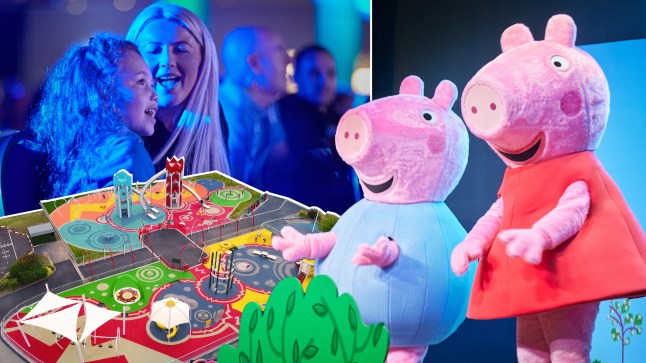
Metro journalists select and curate the products that feature on our site. If you make a purchase via links on this page we will earn commission – learn more
Families, get ready for a sneak peek at all the fun coming to Butlin’s in 2026 (and the serious savings you could snag while planning your next adventure!)
If you thought Black Friday was just about mega deals on home appliances and best-selling beauty products, then you’d be wrong – from 17 November until 2 December, the Butlin’s Red Friday sales event gives you a chance to plan your next unforgettable trip for less.
What’s in store for visitors in 2026, we hear you ask? Offering savings of up to a whopping 40%, whether it’s your first visit or a long-standing family tradition, there’s plenty to look forward to at Butlin’s.
Guests can enjoy all the excitement of brand-new Masked Singer costumes, Diversity’s breathtaking summer show, surprise celebrity appearances, and the action-packed thrills of Max Pro Wrestling, while little ones will be delighted by favourites like Peppa Pig and Baby Evie.

Butlin’s Red Friday Sale
Save up to 40% on 2026 bookings at Butlin’s from 17 November – 2 December. Guests can expect plenty of incredible entertainment including Diversity’s summer show, Max Pro Wrestling, all-new Masked Singer costumes and celebrity appearances as well as the chance to meet Peppa Pig and Baby Evie.
For those looking ahead to the February 2026 Half Term, there’s plenty to get excited about. Families can be among the first to experience the new season showcase, packed with indoor entertainment guaranteed to banish the winter blues.
From weekend escapes to longer summer breaks, there’s something for everyone, whatever the weather – and all of this comes with up to 40% off and flexible deposits starting from just £1 per person.
Butlin’s is also sweetening the deal with exclusive add-ons during its ‘Red Friday’ event.
Families can enjoy an extra 10% off dining plans and 10% off All-Inclusive Drinks Packages on 2026 breaks, making mealtimes and tipples even more of a treat.

Ready to book? Butlin’s has made it stress-free with flexible payment plans and its Lowest Price Guarantee. Lock in your favourite dates with peace of mind that you’ll get a refund if you find the same break at a lower price after booking.
At Butlin’s it’s all about making wonderful memories, enjoying unforgettable shows, and soaking up the fun-filled, family-friendly atmosphere.
And, with this much excitement on the horizon (and such unmissable price reductions!), there’s never been a better time to plan your 2026 adventure.
Follow Metro across our social channels, on Facebook, Twitter and Instagram
Share your views in the comments below
17 Nov, 2025 | Admin | No Comments
MySweetSmile’s Black Friday sale is here – find huge savings and free gifts inside

Metro journalists select and curate the products that feature on our site. If you make a purchase via links on this page we will earn commission – learn more
According to research, a bright, white smile is an indicator of good health, youth and even success.
But, if you’re a tea drinker, red wine lover or coffee addict, you’ll probably know the struggle of staining.
No matter how committed you are to brushing twice a day, modern life has a habit of clinging to your enamel.
Thankfully, we’ve got just the thing to keep your grin gleaming – and it’s currently on offer for Black Friday.
Teeth whitening specialist MySweetSmile has just rolled out its biggest-ever Black Friday event, and rather than a blink-and-you-miss-it day of discounts, it’s gone all in with 11 days of unmissable offers and daily treats running from 21 November right through to 1 December.
The brand has brought back the two offers shoppers wait all year for: you can buy two products and get a third completely free, or buy one product and pick up a second item for half price.
Ideal if you’re stocking up before party season or treating someone else to a brighter smile, these offers make snapping up pearly white essentials more affordable than ever.
You can shop the event across Amazon and TikTok Shop, but the real fun is happening on the brand’s own site, where shoppers who spend over £30 can snag a new full-size free gift every single day.
Essentially it’s a smile-themed advent calendar for anyone hoping to look a little fresher before the festive season kicks into full swing.
There’s also a hefty 40% off site-wide, bringing MySweetSmile’s bestselling, enamel-safe and peroxide-free Teeth Whitening Powder that users say ‘actually works’ from £29.99 down to only £17.90.
Designed specifically for those with sensitive teeth and better enamel care in mind, the MySweetSmile Teeth Whitening Powder is an affordable and pain-free solution to dull, stained teeth.
Designed to be used every day after brushing your teeth, the non-abrasive formula instantly gets to work on deep-set stains from coffee, tea, wine and more while ensuring zero pain or sensitivity thanks to its peroxide-free formula, leaving teeth ‘noticeably whiter’ and gleaming.
It’s pretty clear that with daily freebies, generous savings and clever bundle deals, MySweetSmile’s Black Friday event is less about frantic shopping and more about treating yourself.
Check in each day to see what the freebie is, stock up on favourites, and by the end of the 11 days you’ll have a noticeably brighter smile and a few extra goodies for the festive season.
In the mean time, explore our top picks from the MySweetSmile Black Friday 2025 sale below.
MySweetSmile Black Friday 2025 – top picks

Teeth Whitening Strips (21 Treatments)
The MySweetSmile Teeth Whitening Strips are completely peroxide-free, instead formulated with the brand’s Advanced PAP Formula, which works to deliver superior whitening performance without damaging your enamel. This hard-working ingredient works to target and break down surface stains on your teeth, such as wine, coffee and tobacco, to reveal a noticeable less yellow smile in as little as one application.

Precision Teeth Whitening Pen
If you have crooked, crowned or uneven teeth then this Precision Teeth Whitening Pen is a clever way to help you get the best whitening results. The pen, which allows for optimum whitening while out and about, not only allows users to maintain their pearly whites, but is also great for touching up your teeth before a job interview or date.

Enamel Care Serum
Helping stop sensitivity at the source, the Enamel Care Serum is a bathroom must-have for those with sensitive teeth. Targeting the cause not just masking the pain like regular sensitivity toothpaste, it helps you enjoy hot and cold food and drinks without sharp pain or discomfort.
Pearly whites in no time…
Follow Metro across our social channels, on Facebook, Twitter and Instagram
Share your views in the comments below

When Summer Robert was seven, she had to borrow a b-cup bra from her friend’s mum because she was bursting out of her school polo shirt.
‘I was so small, I was just a walking boob throughout the whole of school,’ she tells Metro. ‘I definitely looked super awkward because I had nothing on me apart from boobs.’
Now, 18 years later, at 25 years old and 4ft 9in, Summer measures in at around a 30N or 28 O-cup breast size, depending on the shop, with the weight on her chest amounting to more than four stone, or 25kg.
She’s just been diagnosed with a rare condition called gigantomastia, a severe form of macromastia, which causes excess breast tissue to grow rapidly.
‘In the space of a year my breasts have grown 10 sizes,’ Summer says. ‘From 22 to 24, I stayed a K-cup but now they’re increasing rapidly in size again. That’s why doctors think I’ve got gigantomastia, rather than just macromastia.’
Despite this, she claims doctors have refused her reduction surgery due to the fact she exceeds the BMI threshold critera set by the NHS where she lives in Glasgow.
Techically, Summer is categorised as ‘morbidly obese’, but she only measures this way because of her chest size – something that’s caused her problems since she can remember.

‘When I would run in PE boys would shout “bounce, bounce bounce”,’ Summer recalls.
At just 13, she claims she received a shocking comment by a teacher.
‘I wore a vest top under my shirt because there were gaps between the buttons where the fabric stretched, and he said “you need to put a jumper on”,’ she says. ‘I said no because it was summer and I was boiling, so he sent me to the headmaster because he was “getting too distracted”.’
Summer’s parents frequently shouted at school staff for sending their daughter home because of her breasts, but it didn’t phase her. ‘I just thought it’s not my fault these teachers are perverts,’ she adds.
On her walks home from school she would be cat called about six times, and it’s this public harassment that truly affected Summer.

‘I’d bring baggy band t-shirts to school to put over my uniform so I could walk home and not get targeted – but I’d still get cat called,’ she says. ‘I thought “oh my god, I hate this”. I felt like the world was eating me up inside – it was awful.’
At 15, when she’d gone from a b-cup to a DD in the space of a couple of months, Summer’s mum took her to the doctor, concerned about the rapid growth. The GP said it was ‘just puberty’.
But it wasn’t just fitting into her uniform that was a problem at this age. Summer’s large breasts meant older guys were ‘predatory’ towards her, and her first serious boyfriend, at 15, was 11 years older than her.
‘I was sexualised by him and his friends, and my parents obviously hated him, but I’d sneak out to a different town to see him at these weird parties,’ she adds. ‘I thought it was cool but in hindsight it wasn’t.’
Macromastia and gigantomastia
Put simply, macromastia refers to englarged breasts in women – a condition common among teenagers.
Girls with macromastia may have pain in their back, shoulders and neck. They may have difficulty finding clothes that fit, and may require specialized sports bras with wide straps.
They may develop rashes under their breasts, and they may even be unable to perform activities that they wish to perform, such as sports. A proportion of girls with macromastia have anxiety and decreased body image.
The cause is unknown, and it’s diagnosed by patient history and a physical examination. Gigantomastia is a more extreme version.
Source: Nationwide Children’s Hospital
She left school at 16, with double J breasts, to work in hospitality, but the harassment only got worse. ‘I became a chef in my dad’s restaurant but I was too over-sexualised, and other chefs were too grabby and handsy,’ Summer says.
‘So I went back to waitressing and became a manager, but I didn’t get taken seriously. One man put me in a headlock when I asked him to leave because of his creepy and gross behaviour towards me.’
A year later at 17, she returned to the doctor because her breasts had again grown significantly. ‘That was the first time they told me I was too fat,’ Summer sighs.

‘They told me to lose weight, even though I was a size eight on the bottom half. My mum went crazy because there was no fat on me.’
She would receive letters from the doctors with the words ‘BMI’ and ‘overweight’ in bold, which caused her to develop an eating disorder.
‘Being told to lose weight was my final straw,’ Summer adds. ‘I’d been told I was fat from such a young age, from stepping on the Wii Fit which said I was morbidly obese, to getting that letter, so I thought “maybe I am overweight”.
She changed her eating habits and lost a dangerous amount of weight, but always had ‘a fat rack’.
‘It’s because it was pure breast tissue,’ Summer explains. ‘I was really sick, but then my mum broke down and my family begged me to eat – that was when I started looking after myself again.’
It was only at 23, when Summer felt a lump on her breast, that a doctor agreed she needed a reduction. ‘My GP sent me to a cancer specialist the same day and they said “it’s not cancerous but you need a reduction – this isn’t normal”,’ she says.

‘I thought thank god, someone’s listening to me, so she referred me for one and then seven months later they refused to do the reduction because my BMI was too high. They didn’t care.’
So Summer resigned herself to living life with ever-growing breasts, and continues to wear a doctor-prescribed corset wherever she goes.
‘I’ve worn one since I was 16 because if I’m walking my back feels like it’s broken – it’s so intense and painful,’ she says. ‘If I’m washing up or cleaning my house, I have to wear a bra because of the sheer weight of them.
‘I swim a lot because I’m weightless so it’s a relief, but then I get out the pool and it feels horrific.’
She can’t go to the gym, go for a run, or find a bra that doesn’t cost her £400, but despite these drawbacks, Summer has turned her large breasts into a positive.
Known as Scotch Dolly, she went from hospitality to being an OnlyFans creator at 23, at the suggestion of a colleague, after an evening of being harassed by customers behind the bar.
Now, she flaunts her boobs on the subscription porn site for £12.90, and last month alone she made £70,000. Alarmingly three of her former teachers have subscribed to her account.

But for the young model, it’s just more money in her pocket. ‘When I first started there was one bikini picture of me and I made £800 in one day,’ she says. I used to make that in two weeks.’
Now, when she gets cat called walking down the street, she replies and tells them to subscribe to her OnlyFans.
‘When I was younger I hated the attention but now I just think they could be a potential buyer, and my subscribers aren’t creepy, they genuinely love my breasts and support me.’
With her newfound confidence, she wants young women who face similar struggles to ‘focus on themselves’.
‘Blame the clothes companies if nothing fits you, big boobs are beautiful and there’s nothing wrong with your body,’ she says.
Do you have a story to share?
Get in touch by emailing MetroLifestyleTeam@Metro.co.uk.
17 Nov, 2025 | Admin | No Comments
This brow product always gets me compliments – and it’s currently on sale

Metro journalists select and curate the products that feature on our site. If you make a purchase via links on this page we will earn commission – learn more
When it comes to my brows, I don’t mess around. After years of trial and error (we all remember the overplucking phase, right?) they’re finally in a good place.
The key to achieving the best brows is maintenance, whether it’s going to a salon to get them laminated or using an at-home kit to create a fuller look on a budget.
However, there’s one product in particular that I now cannot live without to achieve a flawless brow, and that’s the Benefit 24-Hour Brow Setter Clear Brow Gel.
Giving me countless compliments on the daily, this brow gel reminds me that there’s a reason Benefit are the number one brow brand worldwide…
The Benefit 24-Hour Brow Setter Clear Brow Gel comes with a dual-ended brush head, with one side boasting long bristles to comb the clear product through your brows, and the other with short bristles to help create your desired shape for a flawless finish.
It’s as simple as that! I use this as the last step in my makeup routine to ensure my brows are looking spot on before heading out the door, and my perfectly shaped brows last all day long.
Giving impressive hold without heaviness, the gel formula is super lightweight to ensure it never feels like you’re plastering on the product.
It first feels quite wet, but as it dries it sets perfectly to give you a more natural appearance, without the unwanted flaky or crisp residue. A little goes a long way, too, so you’ll get a great amount of usage for the price.
It states that it is 24-hour lasting, which I can confirm. From leaving home at 8AM to returning in the evening, this brow gel ensures my brows stay exactly how I placed them, no matter how windy or unpredictable the British weather may be.
Scott's top brow-taming tip:
Use the flat side of the brush to push the hairs down so that you get that at-home laminated effect in seconds.
What’s even better is this brow product can be teamed and layered with your other favourite brow products for an even more streamlined look.
I’m a true believer that brilliant brows change your appearance in seconds, making you look put together and like you’ve made an effort, even if you’ve put in very minimal. The Benefit brow gel is my key to achieving just that.
For me, this Benefit brow gel will always be my go-to in my makeup bag.
Follow Metro across our social channels, on Facebook, Twitter and Instagram
Share your views in the comments below
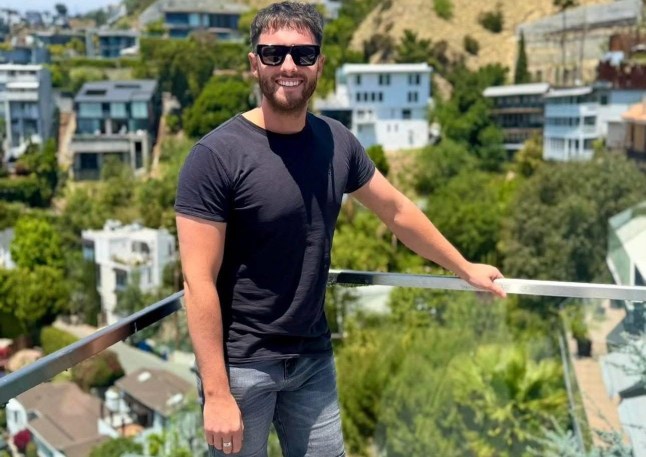
Sitting alone in a cold, grey gym changing room, I stared at myself in the mirror. My face was gaunt, lips cracked, and I was starving and exhausted.
Worst of all, it was my 30th birthday and I felt pressured to spend it working out. Certainly no birthday cake for me.
My phone lit up with another voice note from my ‘mentor’, Gary*, telling me that winners don’t get tired. Discipline beats emotion. All the usual cliché quotes that he’d shout at me, and not a ‘happy birthday’ in sight.
It was then I realised – if this is what winning looks like, I’d rather lose.
I discovered Gary at my lowest ebb, just 18 months earlier. I was heartbroken, skint, and feeling totally lost in my life.
An almost seven-year relationship had ended and I was barely scraping by in my business, an entertainment company. I started drinking alcohol regularly and hitting the clubs every weekend.
Then, someone recommended Gary’s podcast to me and I started listening. I thought he was incredibly charismatic, confident, and living the life I thought I wanted.
He claimed to have an eight-bedroom manor house, supposed six-figure monthly salary, a beautiful family, a hot wife, and a ripped body.
Frankly, he was basically a walking Andrew Tate cliche.

After I interacted with some of his posts, Gary messaged me one day on Facebook – I was following him and he could view my content – saying he could see I needed his help and to wire him £1,500 to work with me for six weeks.
I felt flattered that he’d messaged me and I believed in him, so I grabbed my credit card without hesitating.
What I didn’t realise then was that I wasn’t signing up for mentorship. I was signing up for a cult.

Within a few weeks, I travelled from Bradford to Essex where Gary lived for my first in-person coaching session, which included working out with him.
He was qualified in NLP but as far as I was aware he had no PT qualifications.
A few months later, I became one of his top ‘students’ (as he called us) simply because I was willing to throw myself into whatever he told me to do. At first, I was proud of that, but it started to become ridiculous.

He would be voicenoting and phoning me all day, every day, demanding to know what I was doing at that exact moment.
He would often go from bigging me up and telling me how amazing I was, to in the next breath pulling me down and saying I was ‘stupid’, ‘pathetic’ or a ‘little f****g p***y’.
To people like Gary, saying ‘I can’t afford this’ or ‘I want to stop’ is the ultimate sign of weakness. And I felt like if I even hinted at quitting, I’d be branded a loser forever.
Gary’s method was simple: you must do exactly what he said, how he said it and never, ever question him. I was told to hustle harder. Sleep less. Eat less. Cut out distractions. Push past pain.
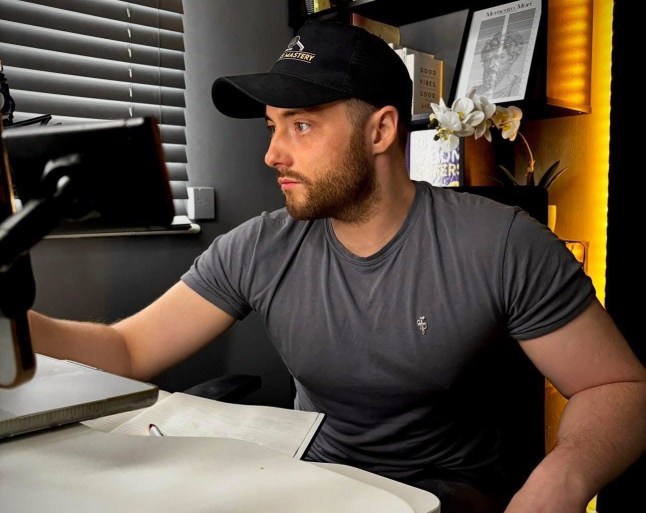
Once, when I challenged Gary on how he talked about his wife, he smacked me across the face and told me to never speak to him like that again.
He said I’d just proved I was still a ‘silly little boy’ and used my past against me, saying that my attitude was the reason my ex-girlfriend left me.
I’d love to say I broke free from the cult that day but I didn’t.
By that point, I was genuinely scared of him. So I continued isolating myself from my family and friends as I felt like that was what I was supposed to do. I became obsessed with tracking macros and growing my business revenue – I thought this was the only way to prove my worth, to attain the life Gary claimed to have.
I developed disordered eating habits, compulsive exercising, and I couldn’t remember the last time I actually laughed properly. I didn’t like who I was becoming, but I was too deep in to walk away.
Then came the bodybuilding competitions, encouraged by Gary, which made me miserable.
In preparation for those, literally every meal I had and every workout I did was being orchestrated by him. This led me to developing bulimia.
BEAT
I’d had bulimia previously when I was 17; this time, it felt like the only way I could get through Gary’s regime and diet.
I would secretly binge sweet treats and carbs and then purposely throw it all back up so that I could still make my check-in the following morning at 5am without him knowing what I had done.
Getting out wasn’t quick or easy, there was just a series of slow painful realisations – like that one on my 30th birthday.
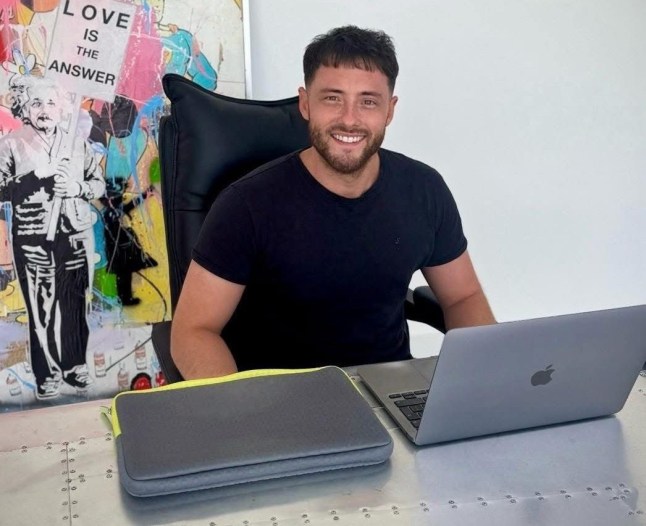
Ultimately, I sent Gary an email telling him I didn’t want to continue with his mentorship and immediately blocked him on everything. I never knew his reaction.
I instantly felt like a free man; and like myself again.
Looking back, Gary’s promise of an idyllic life and dismissing any perceived weakness was the textbook ‘toxic masculinity’ that Andrew Tate devotees still gather for. My mentor looked and spoke very similarly to Tate, and he made me think I had to be like that too.
Unlearning took time and energy. It was a long journey with a lot of therapy and diversifying the media I consume.
Men's Mental Health Month
Men’s Mental Health Month takes place every November to address the stigma surrounding mental health
How you can support:
Encourage the men in your life to talk about their feelings and check in with them, and be prepared to listen without judgment.
Support men in seeking professional help like therapy or counseling when needed.
Challenge stereotypes. Support positive role models who show that real men can cry, talk, and care.
If you or someone you know is suffering, contact Mental Health UK for support and resources
These days, my business is thriving more than ever. I train in the gym because it’s good for my health, not to punish myself or to prove my worth. I’ve surrounded myself with mentors and friends who see the real me, not just the highlights.
If you’re a young man being pulled into the manosphere, please hear me: You don’t have to earn your worth through acting tough.
You don’t need to be aggressive to be respected. You don’t need to have a Rolex or Lamborghini to be considered valuable.
Real strength comes from knowing exactly who you are and not needing to prove anything to anyone.
*Name has been changed
Do you have a story you’d like to share? Get in touch by emailing Ross.Mccafferty@metro.co.uk.
Share your views in the comments below.





